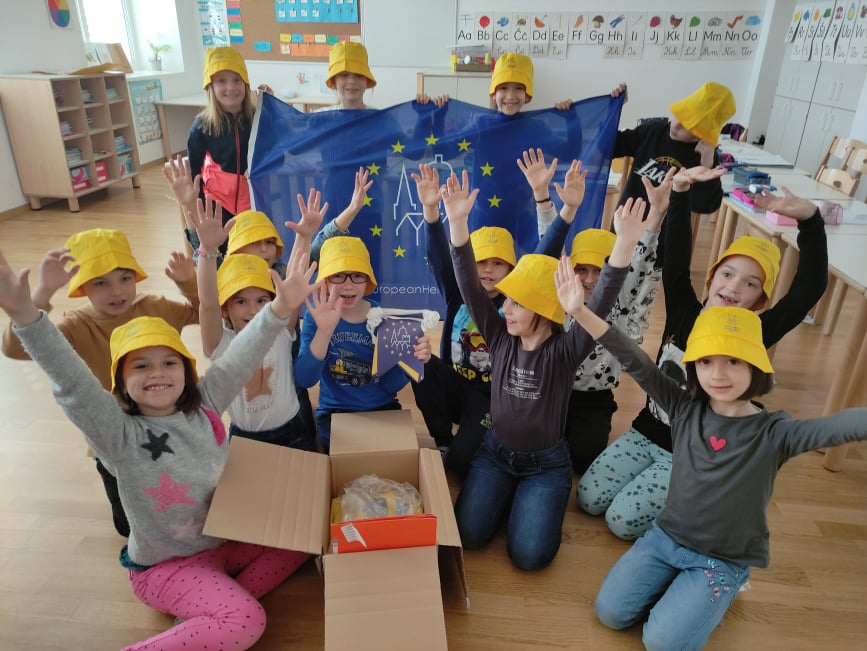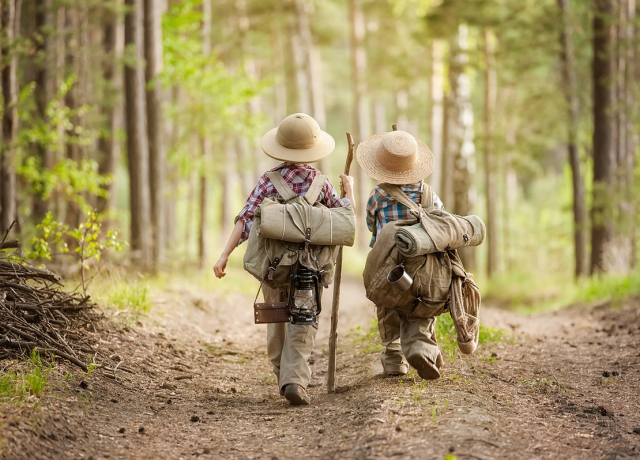European Heritage Days Article:
Young European Heritage Makers competition open until 31 December 2022!
European Heritage Days Article:
Young European Heritage Makers competition open until 31 December 2022!
WHAT IS IT?
Children and young people play a crucial role in the future of heritage protection and promotion and are a precious source of creative ideas and contributions to the field of heritage in general.
Young European Heritage Makers is a competition for the young people of Europe. It is an opportunity for them to explore their surroundings, identify the most interesting parts of their heritage and present them to the rest of the world. This competition should encourage young people to understand the concept of heritage and express their views.
WHY?
The objectives of the Young European Heritage Makers Competition are:
- To collect experiences and stories of how children and young people understand the European dimension of their local heritage. This can include tangible heritage such as monuments and buildings, features of the natural landscape, or intangible heritage shared by their community, such as dancing, singing or local cultural traditions. Creative interpretations are very much encouraged.
- To identify and highlight the work of young people interested in heritage.
- To bring future #HeritageMakers into the spotlight and connect them with their peers from other parts of Europe.
Mentors needed!
The role of mentors is to guide Young European #HeritageMakers through the exploration process. Mentors are professionals involved in overseeing groups of children and young people, in youth organisations or schools and colleges. They can be also found in associations or organisations whose field of expertise is heritage or education (for example, museum or library education and outreach teams), and are involved with children and young people in their work. This might be youth organisations (such as Scouts), or local community groups, and will vary depending on where you live.
The role of a mentor is to identify groups of children interested in heritage, introduce them to their surrounding local heritage and make sure the activity is practised in line with the Council for Europe child safeguarding policy .The Council of Europe “Listen – Act – Change Council of Europe Handbook on children’s participation for professionals working for and with children”, including new “Rome Strategy” (2022-2027), adopted by the Council of Europe Committee of Ministers on 23 February 2022, as well as the EU Strategy on the Rights of the Child and the European Child Guarantee should be consulted before and during the delivery of the activities.
Please note that mentors, both individual mentors and organisations, should be trustworthy and have a right to work with children and young people in your country. Read the Council of Europe data protection policy.
WHO CAN PARTICIPATE?

Any group of young people or young individuals who live in the participating countries, who are under 18 years of age at the time of submission and who are interested in observing, exploring and participating in the environment and heritage that surrounds them.
Entries are open to two age categories – age 6-11 (born from 2011 to 2016), and age 11-17 (born from 2005 to 2010).
Only entries by groups are eligible to be selected for the prize. Individuals can submit their work, and it will be shared on the EHD website, but the initiative ultimately intends to encourage the development of shared heritage communities.
Countries participating:
Montenegro
North Macedonia
If your country is not participating and you want to join the competition, contact us at jep-ehd@coe.int and we will get you in touch with your national coordinator.
HOW TO PARTICIPATE?
The European Heritage Days invites Young European Heritage Makers to express their own vision of European Dimension, as well as which European values are recognised in their heritage sites.
The steps are simple:
Step one: Organise an activity with a group of young people, in age categories: born from 2011 to 2016 and from 2005 to 2010, under the theme Young European Heritage Makers. The outcome of the activity should answer the question:
What is your European heritage?
Step two: Present the outcome of the activity through either:
- a video of up to 5 minutes or
- a photo, painting, drawing, or other visual medium, accompanied by a description no longer than 800 words
Step three: Upload your group’s work to the EHD dedicated page (form will be active from 15 August) with details about the participants. Once the national coordinator approves your work, it will be published on the EHD website.
Questions to help you during the exploration process:
- What does heritage mean to you?
- What do you know about European heritage?
- What story of Europe can you see in the heritage around you?
- What is the most interesting feature of your local heritage and is it unique to your cultural environment or shared with other countries?
- How do you present the story in pictures and words?
Try guiding children towards the exploration of heritage rather than telling them what heritage is and what it is not. Always keep in mind that the aim of activity is to understand children’s perception of heritage.
Mentors are responsible for ensuring the activity is practised in line with the Council for Europe child safeguarding policy .The “Listen – Act – Change Council of Europe Handbook on children’s participation for professionals working for and with children” should be consulted before and during the delivery of the activities, as it provides guidance on how to implement it in a safe, ethical and inclusive manner. The EU Strategy on the Rights of the Child and the European Child Guarantee | European Commission (europa.eu) is also an important document to be consulted as is stipulates that every child in Europe and across the world should enjoy the same rights and be able to live free of discrimination, recrimination or intimidation of any kind.
2022 Theme
The 2022 pan-European theme adopted by the European Heritage Days is “Sustainable Heritage”. Young European #HeritageMakers are invited to search for the story of Europe in tangible, intangible, natural and/or digital heritage related to this shared celebration.
Examples of activities:
Mentors might decide to hold community events, workshops or discussion groups which will enable young people to exchange knowledge and ideas, or organise quests, treasure hunts or visits to sites of importance to local heritage – such as museums, monuments, libraries, archives, tourist sites, archaeological sites or historical buildings.
Participants should be encouraged to explore their family heritage by talking to older generations and be given an opportunity to learn new things about their community and the place they live. Find out how people used to live, how they used to dress, what they did in their leisure time, and what jobs they used to do. Are there any special stories, historical events or traditions unique to your town or region? Did anyone come to live in your town from another European country? What unique traditions did they bring with them?
Examples of entries submitted within the Young European Heritage Makers previous editions could be found on the EHD website.
Find inspiration for your activities in our new brochure "Sustainable Heritage" with more event ideas and through our social media presence on Facebook, Twitter and Instagram.
IMPORTANT DATES!
15 August 2022 – 31 December 2022 – Organising activities and uploading entries
January 2023 – Evaluation at national level, selection of two national winners (one per age category)
February 2023 – Evaluation at European level
March 2023 – Announcement of the winners, online ceremony to enable the winners to present their testimonies, exhibition in Strasbourg.
